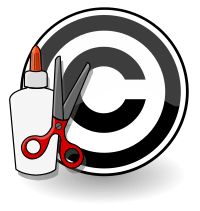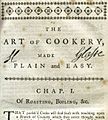Plagiarism facts for kids

Plagiarism means using someone else's ideas, words, or writing and saying they are your own. It's like taking credit for something you didn't create. This can sometimes break copyright laws, which protect original works. If students are caught plagiarizing, they can be removed from school. It can also really hurt their reputation. For writers, plagiarism is a serious problem with legal and ethical consequences.
Contents
What is Plagiarism?
Plagiarism happens when you use someone else's work without giving them credit. It's important to understand the different ways this can happen so you can avoid it.
Types of Plagiarism
- Direct Plagiarism: This is when you copy and paste someone else's work exactly, or make only small changes, and then try to pass it off as your own.
- Self-Plagiarism: This happens when a student uses their own old work (like a paper from a previous class) without getting permission from all the professors involved.
- Mosaic Plagiarism: Also called "patch writing," this is when you copy parts of other works without using quotation marks. It can also be when you keep the same structure and meaning of an original text but just change a few words to synonyms.
- Accidental Plagiarism: This can happen if you forget to mention where you got your information from. It also happens when you paraphrase (put information into your own words) but don't give credit to the original author.
- Mash-up: This is when two or more different sources of information are combined into one. These can be pictures, texts, songs, or videos from various media.
How to Avoid Plagiarism
Knowing what plagiarism is isn't enough; you also need to know how to prevent it. Whether it's on purpose or by accident, writers are responsible for avoiding plagiarism.
Citing Your Sources
It's super important to mention your sources while you are doing research. If you wait until later, you might forget where you got certain information or how to cite it correctly.
When you use information from a source, make sure it fits the context of your paper. Try to avoid sources that seem very biased (only show one side of an argument). Always take time to find the correct details about your source. For example, a web page might be part of a bigger website. Even if the article seems fair, the overall website's bias or reputation could affect it. Using something out of context can also lead to accusations of plagiarism. Taking the time to properly cite all your sources shows respect for other people's original ideas. This is a key part of doing good work!
Related Topics
- Copyright
- Copyright infringement
- Fair use
- Wikipedia:Citing sources (Wikipedia guideline)
- Ghostwriter
Images for kids
-
Hannah Glasse's signature at the top of the first chapter of her book, The Art of Cookery Made Plain and Easy, 6th Edition, 1758, an attempted defence against rampant plagiarism
-
Comparison of a woodblock print by Hiroshige (left) to its copy by Vincent van Gogh
See also
 In Spanish: Plagio para niños
In Spanish: Plagio para niños




